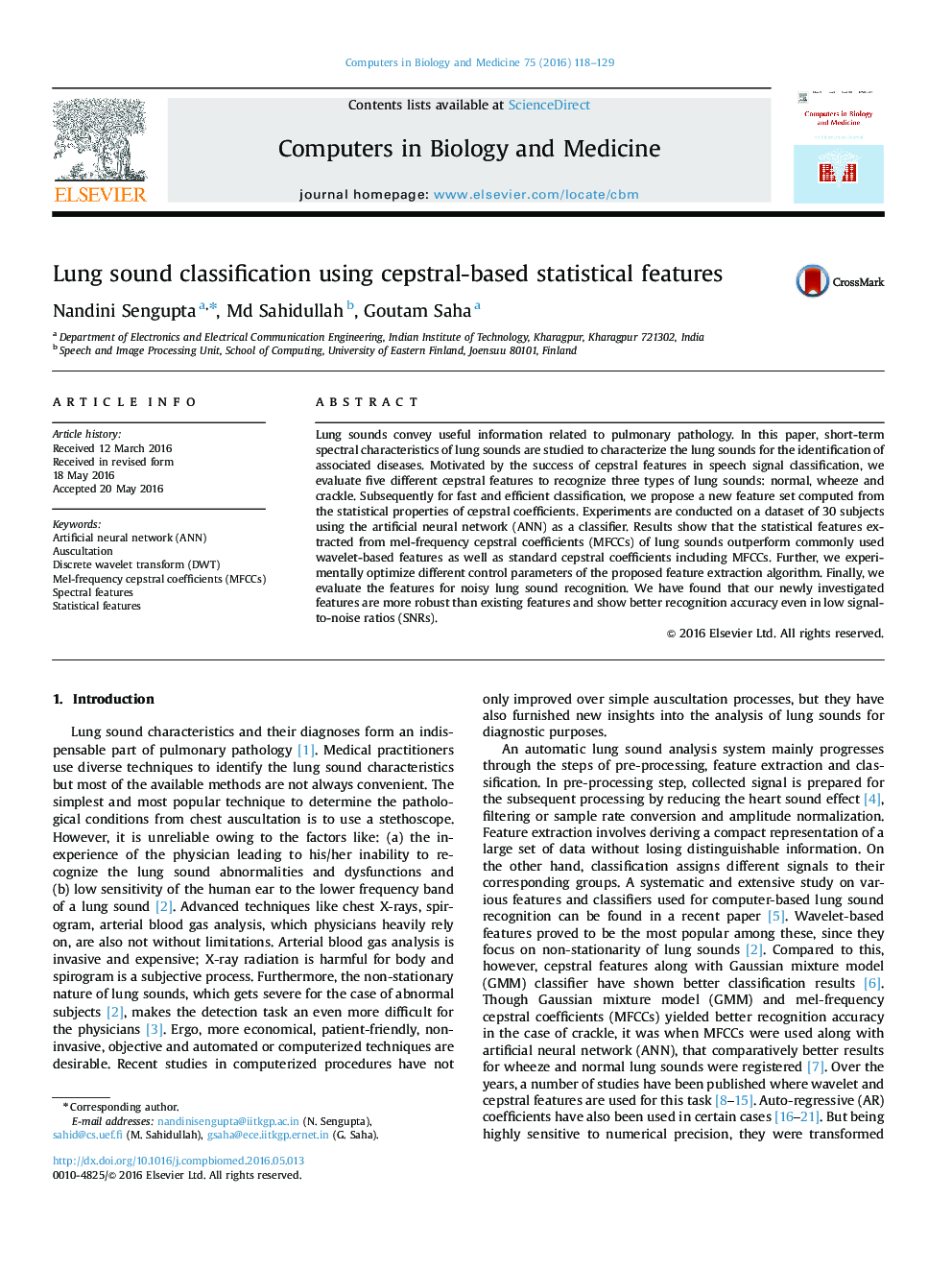| Article ID | Journal | Published Year | Pages | File Type |
|---|---|---|---|---|
| 504807 | Computers in Biology and Medicine | 2016 | 12 Pages |
•A new feature for computer-based lung sound classification is proposed.•Proposed features utilize statistical properties of conventional cepstral features.•Proposed features outperform wavelet-based features.•The computational time is reduced as compared to baseline cepstral features.
Lung sounds convey useful information related to pulmonary pathology. In this paper, short-term spectral characteristics of lung sounds are studied to characterize the lung sounds for the identification of associated diseases. Motivated by the success of cepstral features in speech signal classification, we evaluate five different cepstral features to recognize three types of lung sounds: normal, wheeze and crackle. Subsequently for fast and efficient classification, we propose a new feature set computed from the statistical properties of cepstral coefficients. Experiments are conducted on a dataset of 30 subjects using the artificial neural network (ANN) as a classifier. Results show that the statistical features extracted from mel-frequency cepstral coefficients (MFCCs) of lung sounds outperform commonly used wavelet-based features as well as standard cepstral coefficients including MFCCs. Further, we experimentally optimize different control parameters of the proposed feature extraction algorithm. Finally, we evaluate the features for noisy lung sound recognition. We have found that our newly investigated features are more robust than existing features and show better recognition accuracy even in low signal-to-noise ratios (SNRs).
